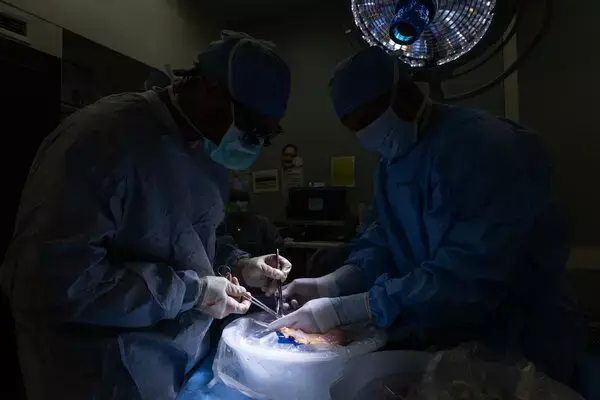
US surgeons perform world's first in-human bladder transplant
text_fieldsNew York: In a historic breakthrough in medical science, a team of surgeons in the United States has successfully performed the world’s first bladder transplant in a human. The landmark procedure was carried out at the Ronald Reagan UCLA Medical Center through a collaborative effort between Keck Medicine of the University of Southern California and the University of California, Los Angeles (UCLA) Health.
The pioneering surgery was led by Inderbir Gill, founding executive director of USC Urology, and Dr. Nima Nassiri, urologic transplant surgeon and director of the UCLA Vascularized Composite Bladder Allograft Transplant Program.
“This surgery is a historic moment in medicine and stands to impact how we manage carefully selected patients with highly symptomatic ‘terminal’ bladders that are no longer functioning,” said Dr. Gill. “Transplantation is a lifesaving and life-enhancing treatment option for many conditions affecting major organs, and now the bladder can be added to the list.”
The patient, who had been dependent on dialysis for seven years, had previously undergone surgery to remove cancer, resulting in the loss of most of his bladder. The remaining bladder tissue was severely compromised and unable to function normally. Additionally, both of his kidneys had been removed due to renal cancer.
“This first attempt at bladder transplantation has been over four years in the making,” said Dr. Nassiri. “For the appropriately selected patient, it is exciting to be able to offer a new potential option.”
The team at Keck School and UCLA spent several years developing the surgical technique, designing a clinical trial, and securing the necessary regulatory approvals. In this groundbreaking case, they performed a combined kidney and bladder transplant, enabling the patient to stop dialysis and begin producing urine for the first time in seven years.
The surgical procedure lasted approximately eight hours. The kidney was transplanted first, followed by the bladder. The new kidney was then connected to the newly transplanted bladder. “The kidney immediately made a large volume of urine, and the patient’s kidney function improved immediately,” said Dr. Nassiri. “There was no need for any dialysis after surgery, and the urine drained properly into the new bladder.”
“Despite the complexity of the case, everything went according to plan and the surgery was successful,” added Dr. Gill. “The patient is doing well, and we are satisfied with his clinical progress to date.”
With IANS inputs







